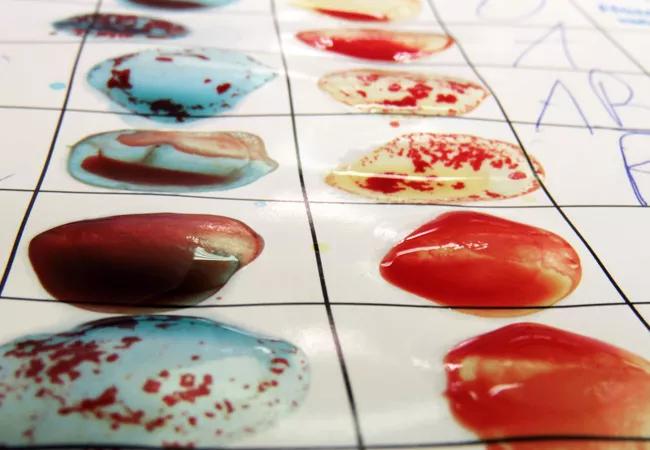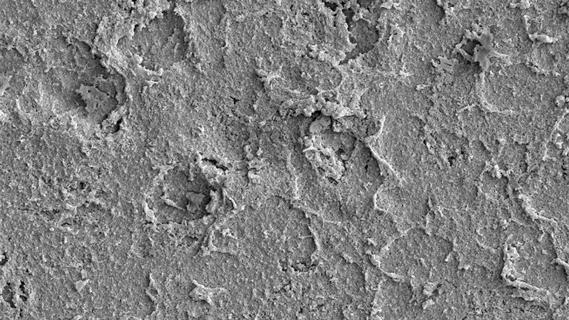Low-cost screening method can guide prophylaxis choices

By Carlos Higuera Rueda, MD; Jared M. Newman, MD; Alison Klika, MS; and Wael Barsoum, MD
Cleveland Clinic is a non-profit academic medical center. Advertising on our site helps support our mission. We do not endorse non-Cleveland Clinic products or services. Policy
Prophylaxis regimens can dramatically lower the chances of a patient developing venous thromboembolism (VTE), one of the most serious complications of total hip (THA) and knee arthroplasty (TKA). The challenge lies in choosing and balancing the safety and efficacy of those regimens, because determining individual patient risk for VTE can be difficult.[i] Clinicians choose anticoagulants based on clinical thrombotic risk factors such as comorbidities, but often lack knowledge of a patient’s genetic background with regard to VTE because screening for heritable risk factors is expensive.[ii]
One area of promise for cost-efficient screening may be blood typing. We recently investigated previously reported associations between non-O blood groups (A, B, AB) and the development of VTE. Our findings show that testing patients’ blood types before total joint arthroplasty (TJA) may help identify patients at risk for VTE and lead to better prophylaxis regimens.
Venous thromboembolism, which includes deep vein thrombosis (DVT) and pulmonary embolism (PE), is a serious complication of TJA. VTE may cause significant patient mortality and morbidity along with longer hospital stays with a significant cost burden, especially in the first three months after TJA.[iii] Fortunately, widespread use of VTE prophylaxis has caused the incidence of VTE following TJA to fall from a previous range of 41 to 85 percent to a much lower range of 5 to 10.6 percent.[iv] Despite that success, clinicians still struggle to find the ideal prophylaxis regimen and to identify patients at risk for VTE.
Comorbidities for VTE include advanced age, increased BMI, history of previous VTE and malignant disease. Genetic predispositions include heritable thrombophilias and hypofibrinolysis, both of which can increase the chance of developing VTE alone or in concert with comorbidities. Screening for such genetic risks, though, is expensive and has not proven to be cost-effective due to their low prevalence in the general population.
Previous studies have described an association between VTE and ABO blood group with non-O blood group individuals being at increased risk for VTE. The antigens that determine the ABO blood group system are expressed on a variety of cells, tissues and molecules, including plasma von Willebrand factor (vWF), a blood glycoprotein involved in hemostasis, and plasma clotting Factor VIII (FVIII), an essential blood clotting protein. Individuals with AB blood group have the highest levels of vWF and FVIII [v] and the slowest proteolytic breakdown of vWF, compared to individuals with O blood group who have increased clearance and faster proteolysis of vWF.[vi] Both vWF and FVIII have been identified as concentration-dependent risk factors for VTE; thus, the differences in antigen-expression leading to variations in the plasma levels of vWF and FVIII may explain the association of ABO blood group and risk of VTE. [vii]
We retrospectively analyzed the electronic medical records of 28,025 patients who had either THA or TKA completed within a single healthcare system between January 2000 and December 2014. Using multivariate regression analysis, we found that patients with AB blood group were 40 percent more likely to develop VTE within 90 days following TJA. Other significant risk factors were age, BMI, history of VTE, malignant disease, hypercoagulable state, TKA and history of anticoagulant use.
The addition of AB blood group as a risk factor for VTE development can better help clinicians stratify patients prior to surgery and perhaps treat them with more aggressive prophylaxis regimens. While clinically relevant risk factors are often the basis for choosing such regimens, genetic factors also play a role in the development of VTE. For instance, when non-O blood group patients also have heritable thrombophilia, their risk of developing VTE increases 23-fold.[viii] Thus it would be advantageous to develop and use low-cost screening methods to allow physicians to identify patients’ increased risk for VTE beyond the clinical risk factors. Based on our study’s results, we propose ABO blood group testing prior to surgery as an inexpensive method to identify patents at increased risk for symptomatic VTE after TJA.
Dr. Higuera Rueda is staff, Dr. Newman is a research fellow and Ms. Klika is a Research Program Manager in the Department of Orthopaedic Surgery.
REFERENCES

Researchers hope it may one day help patients avoid explantation surgery

Patient age and baseline platelet count are considerable influences

Cleveland Clinic’s Adult Reconstruction Research leaders share what they’ve learned over 16 years

Cleveland Clinic researchers raise awareness of disparity and call for change

Patients who score lower than 40 on the VR-12 Mental Component Summary need more care after surgery

Reducing prescriptions may help keep unused medication out of the community

Optimize patients for surgery by reducing their overdose risk score

Study links worse presurgical pain, function and mental health with dissatisfaction one year after surgery